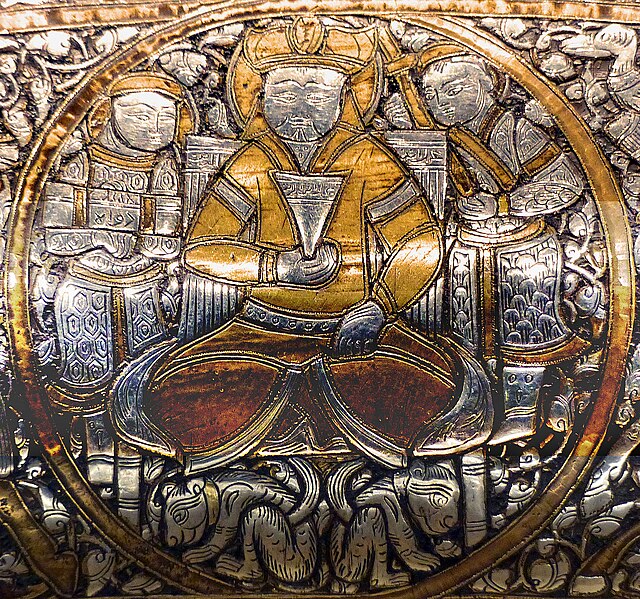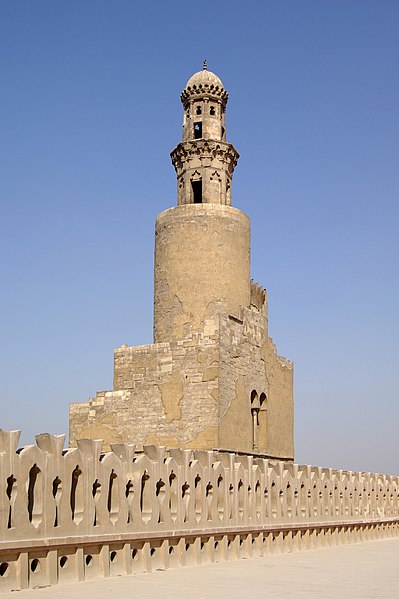The Mamluk Sultanate, also known as Mamluk Egypt or the Mamluk Empire, was a state that ruled Egypt, the Levant and the Hejaz from the mid-13th to early 16th centuries. It was ruled by a military caste of mamluks headed by a sultan. The sultanate was established with the overthrow of the Ayyubid dynasty in Egypt in 1250 and was conquered by the Ottoman Empire in 1517. Mamluk history is generally divided into the Turkic or Bahri period (1250–1382) and the Circassian or Burji period (1382–1517), called after the predominant ethnicity or corps of the ruling Mamluks during these respective eras.
Extent of the Mamluk Sultanate under Sultan Al-Nasir Muhammad
Frontispiece of Sulwan al-Muta’ fi ‘Udwan al-Atba’ by Ibn Zafar al-Siqilli, Mamluk Egypt or Syria, circa 1330.
Horsemen with lances. Nihāyat al-su’l (horsemanship manual) by Aḥmad al-Miṣrī ("the Egyptian"), dated 1371, Mamluk Egypt or Syria.
Enthroned ruler and attendants in the Baptistère de Saint Louis (1320–1340). This is a probable depiction of Sultan Baybars.
Following the Islamic conquest in 639, Lower Egypt was ruled at first by governors acting in the name of the Rashidun Caliphs and then the Umayyad Caliphs in Damascus, but in 747 the Umayyads were overthrown. Throughout Islamic rule, Askar was named the capital and housed the ruling administration. The conquest led to two separate provinces all under one ruler: Upper and Lower Egypt. These two very distinct regions were governed by the military and followed the demands handed down by the governor of Egypt and imposed by the heads of their communities.
Spiral Minaret of the Mosque of Ibn Tulun in Cairo
The near East in 1025 AD, showing the Fatimid Caliphate and neighbors
The Al-Azhar Mosque, of medieval Fatimid Cairo
Mamluk manuscript








